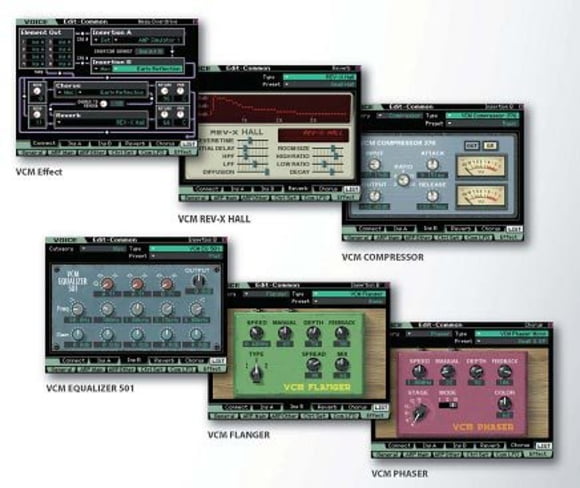3. Sounds
The heart of any workstation keyboard is its range and variety of sounds. Most of todays core workstation sounds continue to use PCM samples as their basis, as these represent a cost-efficient method of providing realistic bread and butter instruments such as piano, brass and percussion, although the audio quality now prevalent makes the M1s presets sound rather grainy and feeble by comparison. Newer synthesis technologies such as analogue modelling have also been added to the mix, providing greater flexibility for sound design. This type of synthesis accurately emulates an old school analogue synthesizer with the standard Oscillator, Modulation, Filter and Envelope parameters, along with modern saturation features to fatten the sound. Manufacturers such as Korg have also championed the return of the vocoder, including it in a number of their workstation keyboards. The wide range of sounds provided by these various technologies, which can often be expanded by additional ROM cards or boards, enables the workstation to fit into practically any music genre, and so it also makes an ideal workhorse keyboard for any commercial studio that needs a large variety of sounds on hand for whatever job they might encounter.

The other main area of sound generation that is part of the workstations arsenal is the sampler. With the ability to sample (record) and map acoustic sounds across the keyboard, create loops, or just make straight audio recordings, you can expand your workstations sound set to your hearts content, and even lay down vocal tracks. Borrowing from software-based samplers, newer workstations have also incorporated sample switching features, or in the case of the Motif keyboard range, what Yamaha terms Expanded Articulation or XA - each element is assigned a controller such as a button or wheel that controls when and how it makes sound. This allows you for example to easily switch to alternative samples mid-performance, which might then change an attack articulation from plucked to bowed string, or muted guitar to slide. And whatever the method of sound production, you can of course then go on to enhance the results with onboard processors providing standard studio-type processing - dynamics, EQ, and time-based effects.
Your Contacts
Product Highlights
Offers
-
Workstations
-
Synth Books

